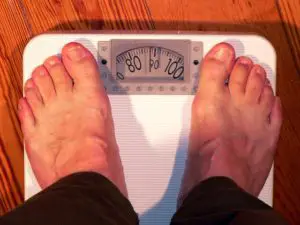 What does a stress belly look like? It’s no secret that stress can lead to weight gain. But did you know that stress can cause your belly to bulge? When we’re stressed, the body produces a hormone called cortisol, and cortisol signals the body to store fat in the abdomen, leading to a “stress belly.”
What does a stress belly look like? It’s no secret that stress can lead to weight gain. But did you know that stress can cause your belly to bulge? When we’re stressed, the body produces a hormone called cortisol, and cortisol signals the body to store fat in the abdomen, leading to a “stress belly.”
So, what does a stress belly look like? It can vary from person to person but typically includes bloating, increased abdominal fat, and even stretch marks.
Table of Contents
1. What does a stress belly look like – What is a stress belly
You might not automatically think of your belly when you think of stress. But it turns out that stress can genuinely impact our gut health, leading to a condition known as “stress belly.” So what exactly is stress belly, and what can you do about it?
Stress belly is a term used to describe visceral fat accumulation around the abdominal area. This type of fat is hazardous because it surrounds our internal organs and can lead to many health problems, including heart disease and diabetes. While several factors can contribute to a stress belly, such as poor diet and lack of exercise, research has shown that stress is one of the major culprits. When we’re under stress, the fight and flight response in our bodies produces a hormone called cortisol. Cortisol signals the body to store fat in the abdomen, leading to a “stress belly.”
2. Causes of a stress belly
Many factors can contribute to stress belly. For one, chronic stress can lead to an increase in the levels of the stress hormone cortisol. This can lead to weight gain, particularly around the midsection. In addition, poor diet and insufficient exercise can also contribute to stress belly. When we don’t take care of our bodies, it’s harder for them to withstand the effects of stress. Finally, certain medications can also cause weight gain and stress belly. These include corticosteroids, antidepressants, and some blood pressure medications.
3. What does a stress belly look like – Symptoms of stress belly
The symptoms of stress belly can vary from person to person. The most common symptom of stress belly is, not surprisingly, increased abdominal fat, including weight gain, particularly around the waistline. Other physical symptoms of a stress belly include slow digestion, constipation, bloating, gas, stretch marks and stomach pain. In addition, people with stress belly may also experience mood swings, anxiety, and depression.
4. How to tell if you have a stress belly
What does a stress belly look like? There are a few different ways to know if you have a stress belly. First, pay attention to your body composition. If you notice that you are carrying more weight around your middle, this could be a sign that stress is causing your body to store fat in this area.
 Another way to tell if you have a stress belly is to pay attention to how you feel physically. If you find that you are frequently bloated or constipated, with a big tummy; these could also be signs that stress is affecting your digestive system.
Another way to tell if you have a stress belly is to pay attention to how you feel physically. If you find that you are frequently bloated or constipated, with a big tummy; these could also be signs that stress is affecting your digestive system.
Finally, if you struggle to lose weight despite making healthy lifestyle choices, this could also be a sign of stress-related weight gain. If you are concerned that you may have a stress belly, it is essential to talk to your doctor
5. How to get rid of a stress belly
Most adults – both men and women- tend to store excess fat in their belly. And this is not just any fat- it’s the dangerous kind of fat that surrounds your organs and increases your risk for diseases. But what many people don’t realize is that this type of fat is also closely linked to stress. When you’re stressed, your body releases a hormone called cortisol, which tells your body to store more fat around your waist. In other words, stress makes you more likely to have a “stress belly.” So how can you get rid of this unwanted fat?
Fortunately, you can make a few simple lifestyle changes to reduce your stress levels and start seeing results.
- Try to get enough consistent sleep each night- aim for 7-8 hours; daily deep, quality sleep will help lower your cortisol levels and reduce stress.
- Make sure to eat a healthy diet full of whole foods and plenty of protein. This will help to keep your energy levels up and reduce cravings. Cut back on carbs, sugar, salty and junk foods, which can help reduce bloating.
- Make sure to exercise regularly- both cardio and strength workout. Try and exercise for about 30 minutes and increase the duration and intensity as you feel more comfortable. There are many benefits of routine exercise. This will help to boost your metabolism and burn more fat. Finally, If you’re struggling to get rid of a stress belly, talk to your doctor about other options such as stress management classes or therapy.
6. Tips for preventing a stress belly
You can do a few things to prevent stress from accumulating in your belly. The first is to practice some form of relaxation or meditation every day, including deep breathing. This will help you stay present and aware of your thoughts and feelings and reduce the stress response in your body.
Secondly, make sure to get plenty of rest and exercise; both of these activities help to reduce stress levels.
Lastly, try to eat a healthy diet that includes plenty of fruits, vegetables, whole grains, and lean protein; this kind of diet has been shown to help reduce stress levels and promote a sense of well-being.
Conclusion
If you are concerned that you may have a stress belly, it is essential to talk to your doctor. You can make a few simple lifestyle changes to reduce your stress levels and start seeing results, such as getting enough sleep, eating a healthy diet, and exercising regularly. By making these changes, you can help to prevent a stress belly from developing.


2 comments
Comments are closed.